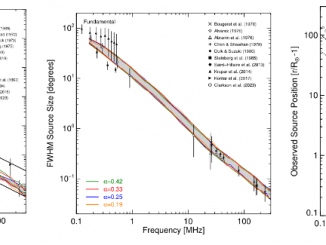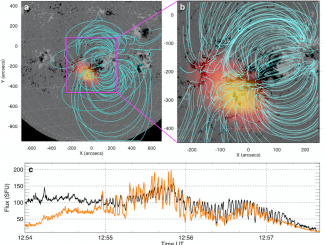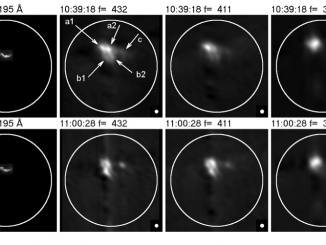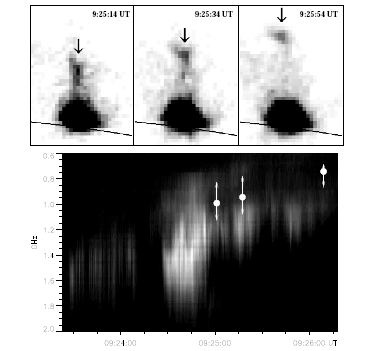Anisotropic density turbulence variation from the low corona to 1 au as deduced from solar radio observations by E. Kontar et al.
Density turbulence in the solar corona and solar wind is evident via the properties of solar radio bursts; angular scattering-broadening of extra-solar radio sources observed through the solar atmosphere, and can be measured in-situ in the solar wind. A viable density turbulence model should simultaneously explain all three types of density fluctuation observations. Solar radio bursts (e.g. Type I, II, III) observed below ~1 GHz are produced predominantly via plasma […]





